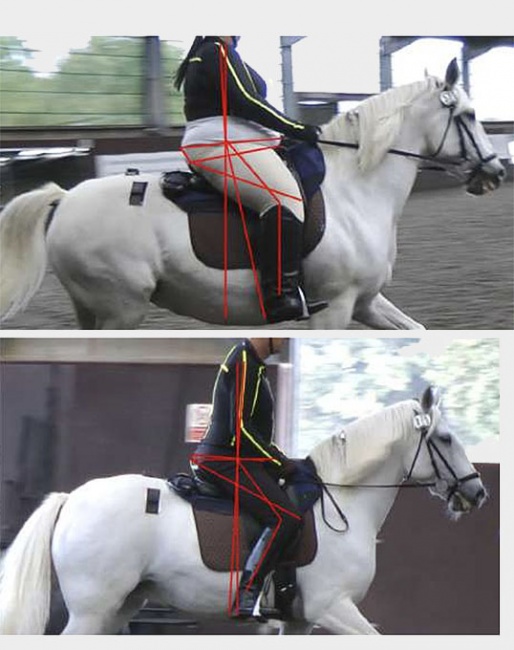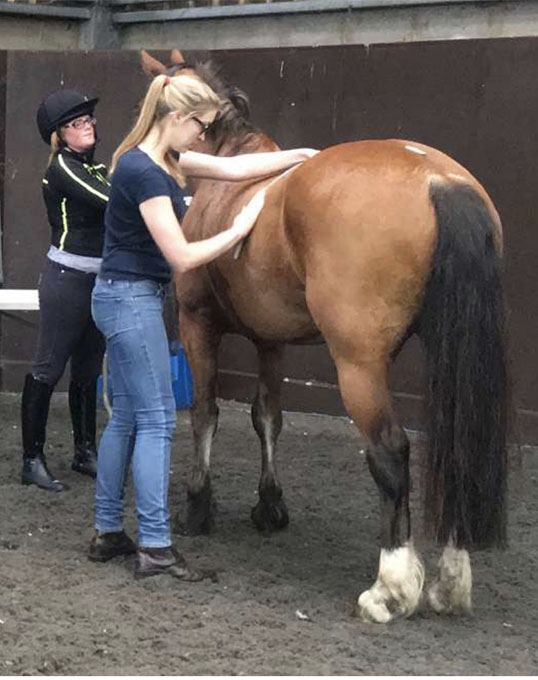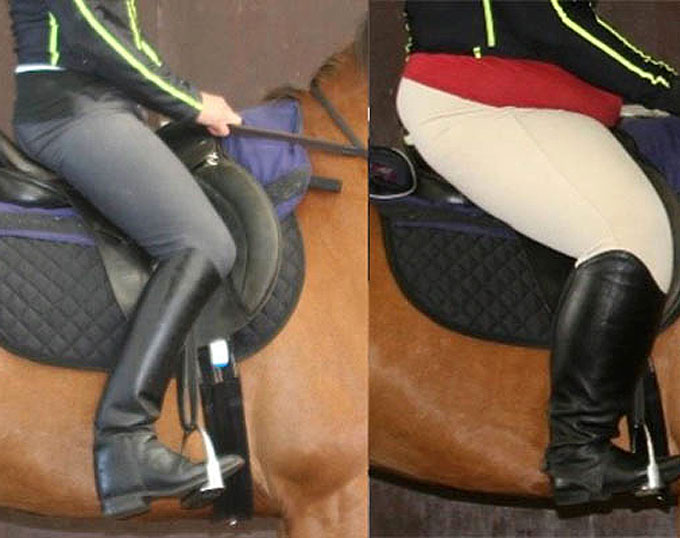
Abstract provided by the Saddle Research Trust
There has been a growing concern within the equine industry that as the human population gets larger, horses are increasingly being subjected to excessive loading. The problem that we currently face however, is a lack of objective evidence that can provide guidelines for appropriate size ratios of horses and riders.
A recent study set out to investigate the effects of rider size on the horse in an attempt to move closer to solving this complex problem. The multi-disciplinary study took place at World Horse Welfare’s Norfolk headquarters and represented an extraordinary level of collaboration and cooperation from across many sectors of the UK equine industry.
This article discusses the changes in back dimensions, muscle tension and muscle pain after being ridden by riders of different sizes.
Background
There is concern that overloading is detrimental to the ridden horse’s back posture, movement and health. Although there is very little information about the effect of the rider on the horse’s back, it is known that ridden exercise can temporarily change the width of the horse’s back. One study reported an increase in thoracic dimensions in horses that
- exercised with good posture versus those that showed poor quality of work
- had well-fitted saddles versus ill-fitting saddles
- were sound compared to horses that were lame
In the same study, a small number of horses also developed back muscle pain after being ridden, which was associated both with a decrease in back width and ill-fitting saddles. Another study that followed a large group of horses over a 12-month period reported that improvements in saddle fit correlated with an increase of back width.
Study design
The research team designed a study to investigate the effect of riders of different sizes on pre-exercise and post-exercise thoracic width changes and epaxial muscle tension and pain.
A group of six sports horses were ridden by four riders of different sizes but similar ability, in a randomised order over five consecutive days. Horses and riders were selected so that the rider to horse bodyweight percentages would be in four different rider categories: Light (rider L), 10-12%; Moderate (rider M), over 12% and up to 15%; Heavy (rider H), over 15% and less than 18%; Very Heavy (rider VH), over 20%. The riders were all capable of riding in balance and although none were familiar with the test horses, they all were accustomed to riding a variety of horses. Each horse-rider combination performed a purpose-designed preliminary level dressage-type test of approximately 30 minutes’ duration.
The back shape was documented before and immediately after each ridden exercise test at the 8th, 13th and 18th thoracic vertebrae using a flexible curve ruler. For each level, the thoracic widths were measured at 5cm and 15cm below the top of the horse’s back.
Immediately after the thoracic dimension measurements were recorded, the long muscles on the top of the horse’s back were systematically palpated on both sides from the withers to the croup. Increased muscle tension was defined as muscle stiffness with little or no yield of the tissue to moderate pressure, which was sometimes also combined with muscle contraction or twitching. Pain was characterised by the horse moving away from the pressure or fidgeting, laying the ears back, swishing the tail, kicking, biting, reactive contraction of the muscle or dipping of the back.
Key results

width measurements
- Rider L increased across all sites
- Rider M increased across 5/6 sites (decreased at T8 15cm)
- Riders H & VH decreased across all sites
Over the five days of testing, before each exercise test, two horses scored significantly higher for increased tension than other horses and one of those horses (horse 5) also scored significantly higher for pain. The location of increased tension or pain was consistent in both horses. After each exercise test, there was a significant rise in the proportion of horses with increased tension and pain.
Discussion
In this study, saddle fit was considered to be adequate, but not optimal, for each horse and every saddle was too small for riders H and VH. Generally, there is a high prevalence of ill-fitting saddles for both horse and rider, so this represented a real-life situation. However, an increase in back muscle tension or the development of pain following ridden exercise can be the result of an ill-fitting saddle, therefore saddle fit cannot be ruled out as a contributory factor in this study. Larger rider size may have exacerbated any negative effects of ill-fitting tack. Riding in a saddle that was too small influenced individual rider position and technique, which was likely to have contributed to increased peak forces.
Horse 5 had persistent saddle slip to the right which may have indicated subclinical lameness, although the recorded objective gait assessment measurements were within the normal range. Lameness alters back movement and can cause back pain, so this also cannot be ruled out as a contributory factor.
Changes in thoracic width in association with exercise over a long-term period may influence back muscle health and development. Over time, repeated increases in thoracic width should develop increased muscle mass, whereas repeated decreases may result in lack of back muscle development or muscle wastage.
A number of factors may have influenced the results of this study:
- the rider to horse bodyweight ratio - alteration of back posture or movement as a result of overall increased force
- sub-optimal weight distribution for riders H and VH in saddles that were too small for them
- rider position, alignment and variation in techniques
- sub-optimal saddle fit to the horse
The effects of the different riders on back muscle and dimensions should therefore be considered as the combined effects of rider size to horse size, rider technique and saddle fit.
Further investigation

Further work is needed to determine whether saddles which are better fitted to both horse and rider may increase the weight carrying capacity of horses.
Conclusions
Larger riders and saddles which did not fit the larger riders negatively influenced postexercise back dimensions and increased the development of muscle tension or pain.
The key take home message is that when larger riders ride, they should select a horse of appropriate size with a saddle that is optimally fitted to both horse and rider.
--- by Quiney, L., Ellis, A., Dyson, S.
Synopsis prepared by Dr. Anne Bondi BHSI, PGDip, PhD, Director Saddle Research Trust
Related Links
Data Collection for Danish Rider Weight Study Completed
Landmark Pilot Study Addresses Effects of Rider Weight on Equine Performance